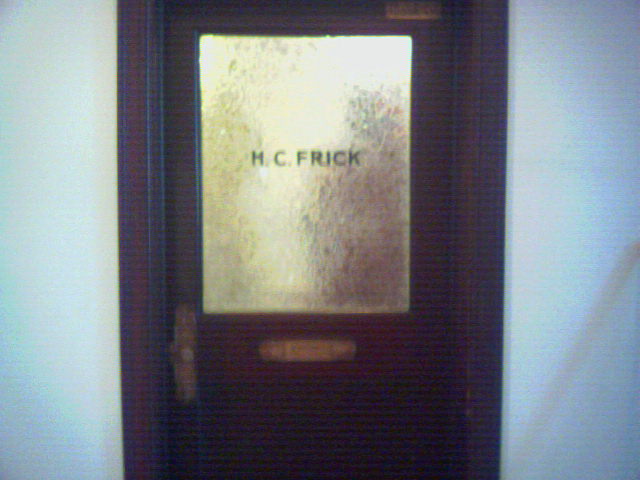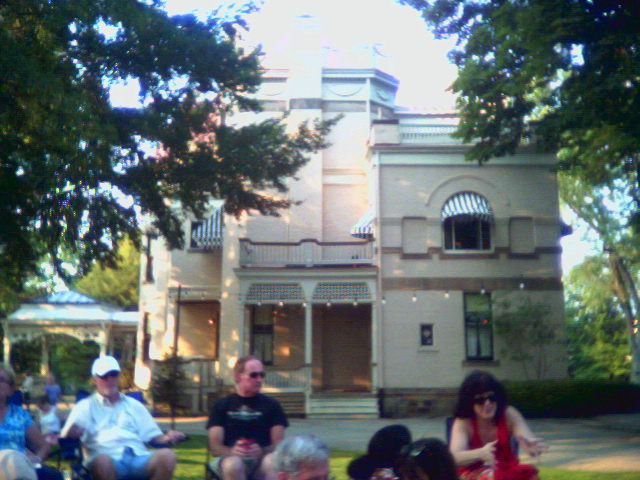We would have started the same way. Here is the view from the elevator: Henry Clay Frick's office door, now the door to the company mail room, supply closet, and kitchenette.
 I took the elevator down from 20 and walked out onto Fifth Avenue, just like he did. I then walked over to the Liberty/Smithfield parking garage, where I had the bicycle tied up, and rode over to Grant Street, by U.S. Steel Tower. In fewer than five minutes, the bike and I were on an articulated bus, an express trip out the East Busway. In 15 minutes, I was off the bus at Homewood Avenue, unmounted the bike from the bus rack, and descended the steps. Clayton is a mere three blocks from the busway station. In just a couple of minutes on the bike, I was here:
I took the elevator down from 20 and walked out onto Fifth Avenue, just like he did. I then walked over to the Liberty/Smithfield parking garage, where I had the bicycle tied up, and rode over to Grant Street, by U.S. Steel Tower. In fewer than five minutes, the bike and I were on an articulated bus, an express trip out the East Busway. In 15 minutes, I was off the bus at Homewood Avenue, unmounted the bike from the bus rack, and descended the steps. Clayton is a mere three blocks from the busway station. In just a couple of minutes on the bike, I was here:South view of Clayton, the H.C. Frick mansion, during The Bobs' concert, Aug 3 2012.

The trip from desk to (essentially) doorknob took only 38 minutes. I am guessing Frick himself never made it that quickly, and I wasn't even hurrying. In fact, I waited out lights at Wm Penn Way, Grant Street, and Penn Avenue, though I got the light at Thomas Boulevard green.
The truth be told, though, I don't know how Frick commuted. Possibly he had a driver to carry him back and forth on city streets. Maybe he used the trolley; I doubt it. For all I know, he had a private streetcar. I'm pretty sure he didn't do it by horse or bicycle, though he may have been able to drive it himself. He died in 1919. To this day there is a museum of antique cars on the Clayton grounds, worthy of a look to see how the upper-crust of Pittsburgh society got around 100 years ago.
Endnotes
Here are a couple of links about Frick:
Henry Clay Frick was one of "the 1%" of turn-of-the-20th-century America. I work in his building. This is NOT how he would have commuted.
ReplyDelete